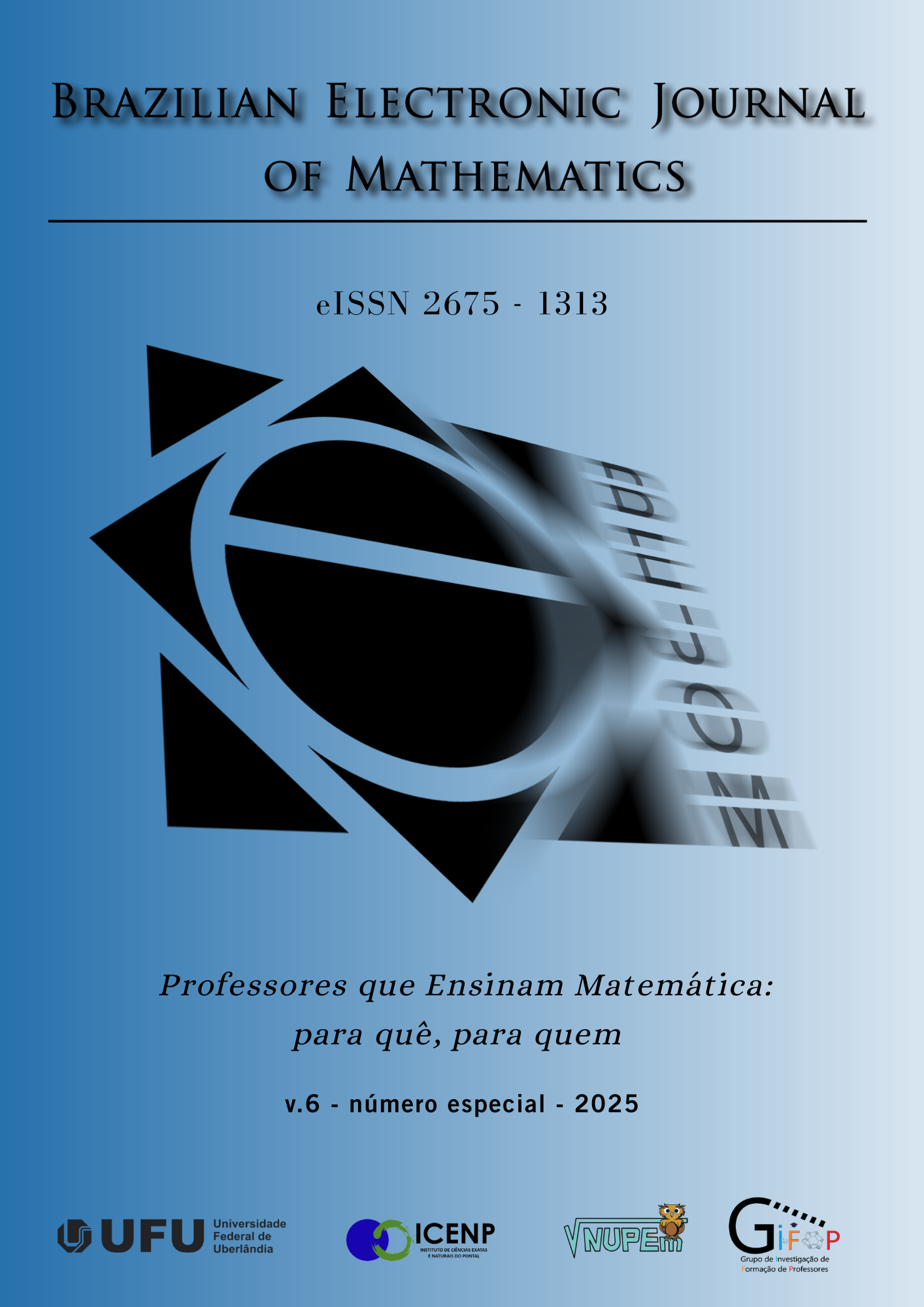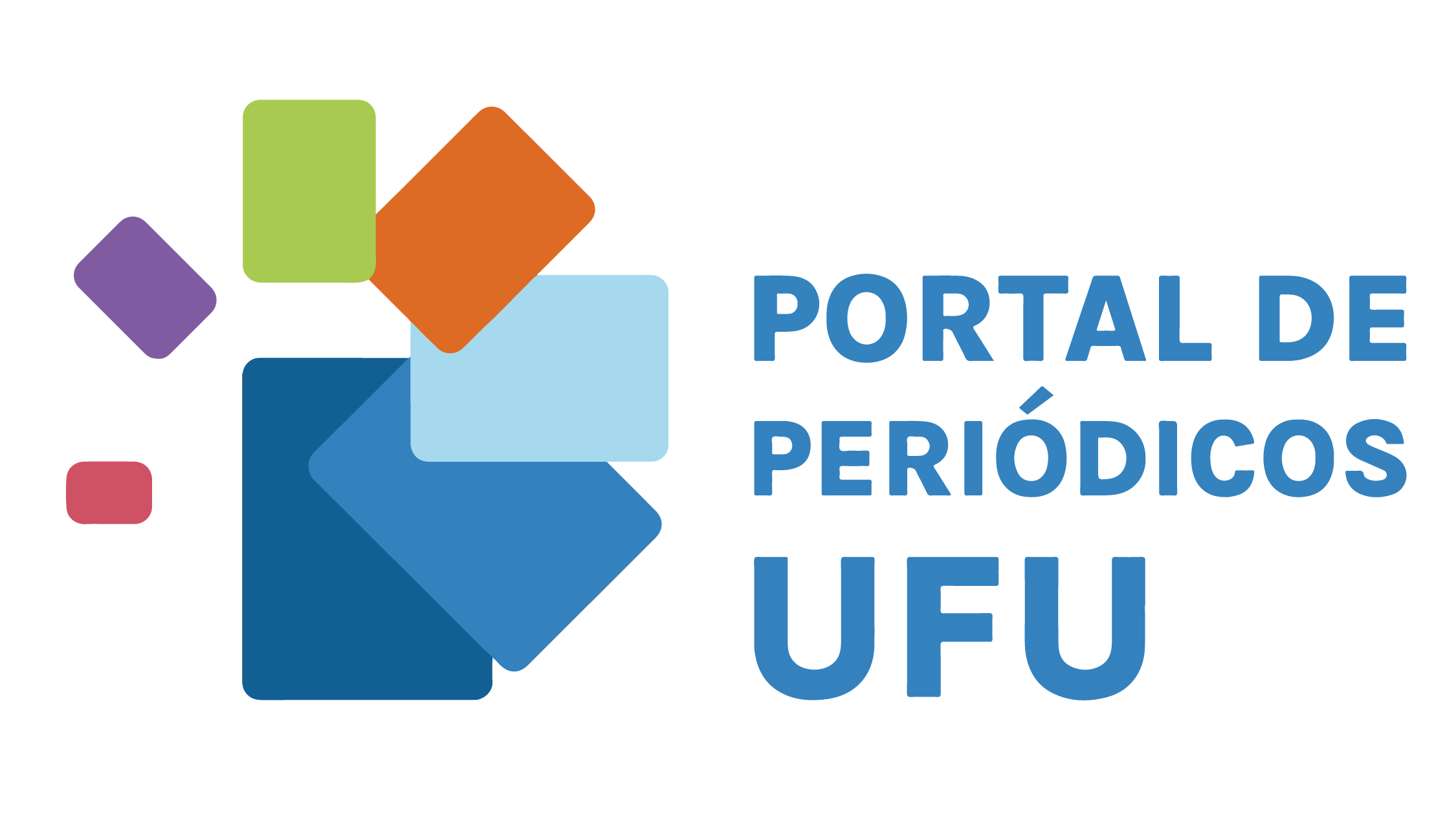Pythagoras’ Theorem
a teaching proposal for visually impaired students
DOI:
https://doi.org/10.14393/BEJOM-v6-2025-72733Keywords:
Pythagoras’ theorem, visual impairment, geometry teaching, sociocultural theoryAbstract
The present article is an excerpt from a master's thesis aimed at investigating the potentials and limitations of a structured teaching intervention using tactile materials on the Pythagorean theorem for visually impaired students. The qualitative study, conducted in the form of a case study, was grounded in Vygotsky's sociocultural theory and involved two blind students attending the 2nd year of high school in two public schools located in the municipalities of Barueri and Itapevi, in the state of São Paulo. The results indicated that the interaction of the students with the adapted material and the mediation of the teacher allowed the participants to articulate the zone of proximal development, the level of actual development, and the level of potential development, making the transformation of potential and actual development evident.
Downloads
References
BOGDAN, R. C.; BIKLEN, S. K. Investigação qualitativa em educação: uma introdução à teoria e aos métodos. Porto, Portugal: Porto Editora, 1991. Tradução: Alvarez, M. J.; Santos, S. B.; Baptista, T. M.
FERNANDES, S. H. A. A.; HEALY, L. Mãos que falam; mãos que vêem. O papel do sistema háptico no processo de objetificação do conhecimento matemático por alunos cegos. In: VII Reunião de Didática da Matemática do Cone Sul. Águas de Lindoia: PUC São Paulo, 2006. v. 1. 2006a.
FERNANDES, S. H. A. A.; HEALY, L. O processo de inclusão de alunos cegos nas aulas de matemática: as vozes dos atores. In: III Seminário Internacional de Pesquisa em Educação Matemática. Águas de Lindoia: SBEM, 2006. v. 1. 2006b.
FERNANDES, S. H. A. A.; HEALY, L. Desconstruindo hierarquias epistemológicas no contexto das interações de alunos cegos com homotetia. Jornal Internacional de Estudos em Educação Matemática, v. 7, p. 91–116, 2014.
OLIVEIRA, M. K. Vygotsky: Aprendizado e Desenvolvimento. Um Processo Sócio-Histórico. São Paulo: Editora Scipione, 1993. (Série Pensamento e Ação no Magistério).
VYGOTSKY, L. S. et al. Linguagem, desenvolvimento e aprendizagem. São Paulo: Ícone/Edusp, 1988.
VYGOTSKY, L. S. Pensamento e linguagem. 2. ed. São Paulo: Martins Fontes, 1989.
VYGOTSKY, L. S. A formação social da mente. 4. ed. São Paulo: Martins Fontes, 1991.
Downloads
Published
Issue
Section
License
Copyright (c) 2025 Nasael Martins Luiz, Rogério Fernando Pires

This work is licensed under a Creative Commons Attribution 4.0 International License.
- Articles published from 2025 onwards are licensed under the CC BY 4.0 license. By submitting material for publication, authors automatically agree to the journal’s editorial guidelines and affirm that the text has been properly reviewed. Simultaneous submission of articles to other journals is prohibited, as is the translation of articles published in this journal into another language without proper authorization.
- Articles published prior to 2025 are licensed under the CC BY-NC 4.0 license.









